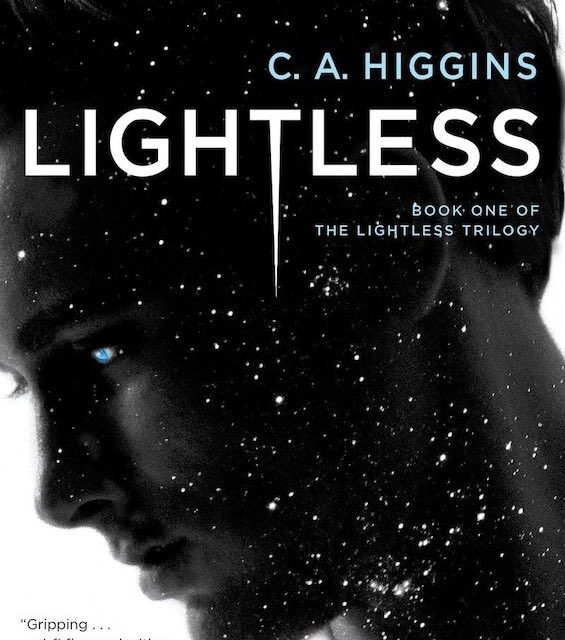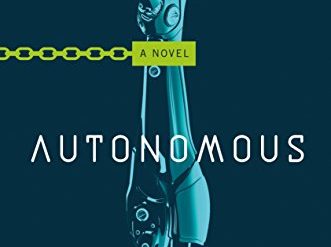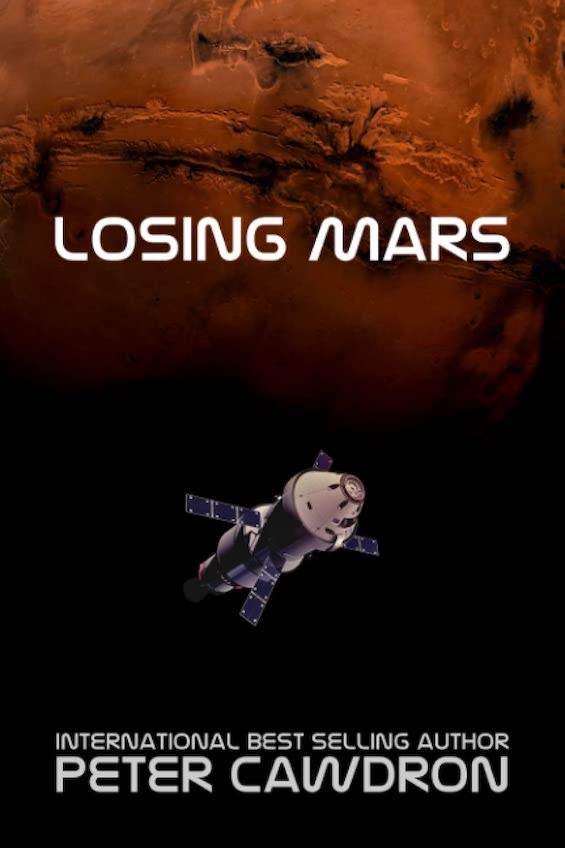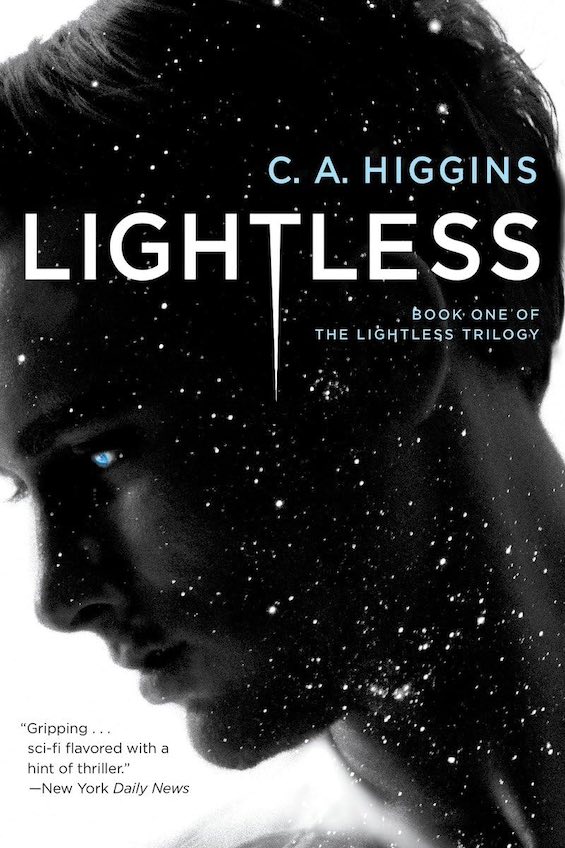
Estimated reading time: 6 minutes
What might we reasonably expect of a novel set in interplanetary space several centuries in the future? Certainly, at a minimum, some plausible picture of technology more advanced than today’s, right?. No alarm clocks, for example. Or fluorescent lights, mainframe computers, and polygraph machines. But that’s what you’ll find throughout C. A. Higgins’ debut, the launch of her Lightless Trilogy. Despite the far-future setting, Lightless is more properly viewed as a mystery story. But even on that score it doesn’t quite measure up. It’s a futuristic mystery that might better have been set in the present.
Oh, the story is suspenseful enough, and the high-stakes game underway is puzzling. The characters are reasonably well defined, if one-dimensional. And the plot steadily moves from beginning to end, with surprises on occasion along the way. But the novel is structurally flawed as well. And that requires a bit of explanation.
Lightless (Lightless #1 of 3) by C. A. Higgins (2016) 320 pages ★★★☆☆
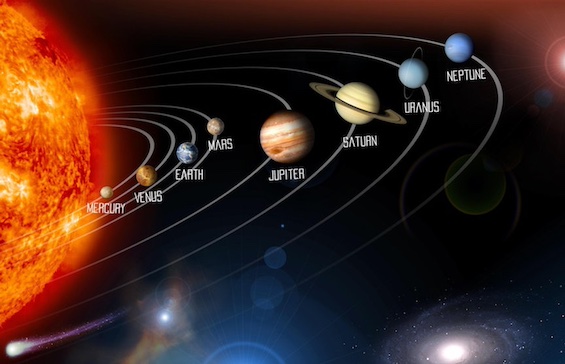
Humanity has populated the solar system
In the future as C. A. Higgins imagines it, humanity has populated the solar system. Not just Earth, the moon, and Mars, but also hundreds of moons, dwarf planets, and asteroids. She only dimly suggests how people have managed to live in such places, almost all of which are hundreds of degrees colder than humans can tolerate. They seem to wrap these places in plastic and grow plants in greenhouses. But it’s anybody’s guess how enough of the sun’s radiation can reach them many thousands of times as far from Sol as Earth. In other words, this picture is completely implausible.
The solar system is unimaginably vast. Today we normally view it as consisting of eight planets and the dwarf planet Pluto, all circling Sol in ever-wider orbits. But at latest count there are also 290 moons, 1.3 million asteroids and planetoids, and 3,800 known comets. At its greatest extent, the solar system spans 18.6 trillion miles, or some 200,000 times the distance from the Earth to the Sun. At that distance, the sun would appear at best as a tiny speck of light, a little brighter than some of the stars that surround it but pale by comparison with others. It’s inconceivable that our species could build anything recognizable as civilization on the icy moons of Saturn, Uranus, and Neptune, much less in the outer reaches of the solar system. And the author, who has a physics degree and styles herself as a science fiction writer, ought to know better.
A ruthless autocracy rules humanity
In Higgins’s imagination, an all-powerful authoritarian government rides herd over billions of people scattered throughout the solar system. It is, in fact, called The System. If there is a single, autocratic leader, there’s no evidence of it. Surveillance is ubiquitous. And the merest hint of dissent will trigger a merciless response by The System. Thousands die in every outbreak of protest. Sometimes millions, as soldiers exterminate the inhabitants of a renegade moon.
Higgins unconvincingly posits a single revolutionary leader called, unaccountably, the Mallt-y-nos. She—it’s known somehow that she is female, despite the fact that The System knows absolutely nothing else about her. Somehow, though, a supposedly brilliant intelligence agent named Ida Stays is convinced that a couple of career criminals know the Mallt-y-nos and, in fact, work for her. These two young men, Leontios Ivanov and Matthew Gale, have suddenly invaded a top-secret government spaceship called the Ananke. What happens next is confusing, but the gist of it is that Gale has escaped having introduced an unknown virus into the computer governing the ship. And Ida Stays arrives via “relativistic drive” to interrogate Ivanov and drag out of him the identity of the Mallt-y-nos.
Are you with me so far? No matter. It develops that Stays finds Ivanov impenetrable. He’s clearly lieing with every breath, but there’s no evidence of it on the “lie detector.” And the rules of The System do not allow Stays to administer a “truth drug” unless she can prove that Ivanov is, in fact, lieing. Unfortunately, the plot of Lightless pivots on this absurd rule, which no government so ruthless could possibly have honored.
Lightless is the first book of a trilogy. I do not plan to read the sequels.
About the author

The author writes about herself on her author website: “Along with writing novels, C. A. Higgins spent most of her time in college doing problem sets, translating vulgar Latin poetry, and fending off sleep deprivation. It was while sitting in one of her physics classes contemplating the inevitable heat death of the universe that she had the idea that would eventually become her first novel, Lightless. After becoming a runner up in the 2013 Dell Magazines Award for Undergraduate Excellence in Science Fiction and Fantasy Writing, she received her BA in physics before continuing on a linear career path by getting a job in theatre. She currently lives in Brooklyn with aspirations of publishing more novels and learning ancient Greek.”
However, Google Books reports that Higgins has since completed the Lightless Trilogy with the publication of two subsequent novels, Supernova and Radiate.
For related reading
For better reading, check out:
- 10 new science fiction authors worth reading now
- These novels won both Hugo and Nebula Awards
- The ultimate guide to the all-time best science fiction novels
- The top science fiction novels
- Good books about space travel
And you can always find my most popular reviews, and the most recent ones, on the Home Page.

